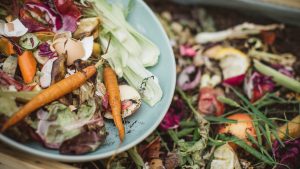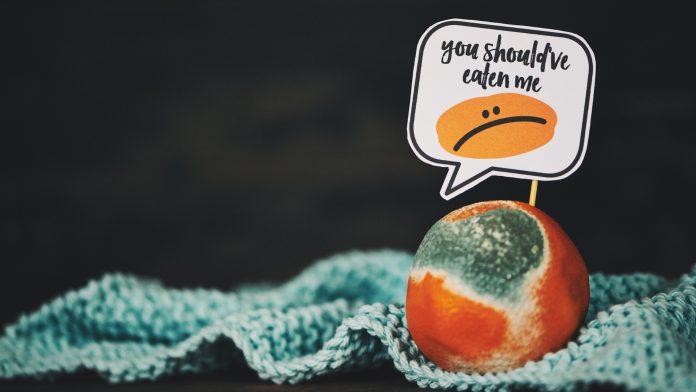Approximately, 1.3bn tonnes of food goes to waste each year. But what can changing opinions and legislation do to influence the reduction of our food waste?
More mouths to feed means farmers must work harder to produce more food. Despite this, farmers are over-producing food resulting in masses of it going to landfill. This over production of food can cause barren farmland and may lead to economic collapse.
Cutting food waste in the food service industry
Hayashibara, held a workshop on November 18-20 at the Culinary Institute of America (CIA) at Copia, in Napa, California, USA as the Nagase Food Ingredients. Twelve prominent North American chefs, who are experts in food service and R&D, came together to appreciate global cuisines and learn new skills and techniques to enhance their food service operations.
The workshop showcased many applications of TREHA (R) (trehalose), a plant-based food ingredient with the natural functionalities of extending freshness of foods. TREHA is derived from starch and is GRAS-designated, Non-GMO, and Kosher- and Halal-certified.
Two guest chefs demonstrated several applications in Japanese dishes–sushi, tempura and tofu–as well as Western confectioneries, cheesecake and matcha creme brulee. They shared their experience and advice, including benefits in reducing food waste, operation costs, and maintaining freshness and outstanding food quality for their consumers.
After learning TREHA’s unique functionalities, each of the chefs had applied their new knowledge to creating their own recipe. In three days, more than 25 different dishes were presented on the table and created exciting discussion about the effectiveness and use of TREHA.
Furthermore, in respect to contributions towards two of the UN SDGs–(2) Zero Hunger and (12) Responsible Consumption and Production–, the attending chefs learned about how using novel food ingredients can have enormous impact in sustainability on a North American and global scale.
In large-scale food service operations, where enormous amounts of food are prepared (banquets, catering for inflight and cruises), it is challenging to maintain high quality of freshness–especially on buffet lines and in mass production where food may be held prior to serving. The chefs were very excited to learn how TREHA can be applied to preserve freshness longer in both fresh and frozen food applications.
The workshop gave potential solutions to global food issues by utilising TREHA’s unique functionalities such as extending the shelf life of foods, keeping freshness longer, especially fresh vegetables and fruits, and improving quality in a variety of foods.
The moderator, Chef Barbara Alexander, the former CIA executive chef, was fascinated to see that a salad prepared the day before was as fresh and crisp after more than 12 hours. This demonstrated TREHA’s natural ability to prevent vegetables from going limp and preserving the crunchy texture for a longer period. In addition, one of the chefs tried TREHA on roast chicken, and the attending chefs were amazed at the difference in moisture and the golden skin.
How to cut waste at home
Experts at the American Dairy Association Mideast have published information on how to limit food waste, after finding that a massive percentage of Americans waste their food at home.
A new national survey by the American Dairy Association Mideast found that 94 percent of Americans admit to throwing food away at home. It has published a guide on how to limit food waste.

The American Dairy Association Mideast gave the following tips to limit food waste in your home:
- “Organise Your Fridge – Try to follow the “first in, first out” rule, by rotating older food to the front of your refrigerator so it’s not forgotten. Where you store certain foods can also make a big difference in how long they stay fresh. Cheese and yogurt should be tightly sealed on the top shelf, while produce is best stored in humidity-controlled drawers. And even though your refrigerator door seems to be made to hold your gallon of milk, storing it there will cause it to get warm each time the door is opened. Instead, put milk in the back of the bottom shelf where it will stay cold.
- “Get Creative – Find new ways to use those extra ingredients to create new family favourites. If you bought a pint of whipping cream and a recipe only called for a cup, the extra is great folded into scrambled eggs or mashed potatoes the next day. Think your produce looks like it’s past its prime? It could still be added to soups, stir fry or casseroles. You can also throw any extra fruit and yogurt you have into the blender for a healthy smoothie.
- “Move Perishables to the Freezer – Whether there’s leftovers from a prepared meal or you have some extra fruits and veggies, if you can’t use it right away, freeze it. This can be especially helpful for dairy foods. Milk, cheese and butter can be frozen for weeks and taken out of the freezer when you need them. You can also portion out tablespoons of herbs and sauces and freeze them in ice cube trays. Just pop one out to use in any recipe.”
What about the waste caused by tourism?
A gap in how food is wasted in areas of high tourism is calculated and understood has been highlighted by research from the University of Eastern Finland and the University of Southern California.
According to the research team that worked on this project, a focus on preventing food waste only in traditional food service accommodation establishments ignores that reality of growing tourist households and will stifle sustainability efforts.

As a major global issue, food waste has been identified as the most prominent type of hospitality waste. Roughly, 1.3bn tonnes of food is lost or goes to waste each year, this is the equivalent to up to one half of all food intended for human consumption.
The tourism industry is facing ever growing economical, societal and legislative reason to address the issue of food waste. Tourism is no longer limited to package holidays and hotel stays, due to the emergence of alternatives like camping, couch surfing, AirBnB and recreational travel vehicles. Food waste is created in all these tourist household, however very little research is conducted on this topic.
“We can already see that there are savvy players in the tourism industry who have succeeded in reducing their food waste and have even managed to turn that into an asset.
“Yet, it is not enough for only the traditional food service and accommodation establishments to reduce their food waste, we need to get all tourist households on board.
“As the tourism sector changes, research into food waste and sustainability becomes ever more important,” Research Manager Juho Pesonen from the University of Eastern Finland says.
According to the research team, comprehensive reduction of food waste requires that its sources and amounts are identified and that the disposal by tourist households is addressed. In addition to this assessment there is a need to study the drivers of tourist food waste and the barriers to its reduction.
What are governing bodies doing to help?
The European Commission has agreed on a Delegated Act implementing an EU-wide methodology for the measurement of food waste.
Around 20 per cent of the EU’s food is lost or wasted every year; and the Circular Economy Action Plan adopted by the Commission in 2015 identified prevention of food waste as a significant priority. The methodology detailed in the Delegated Act is intended to streamline the process of monitoring levels of food waste across the EU in order to build a coherent set of data.
First Vice-President Frans Timmermans said: “Food waste is unacceptable in a world where millions still suffer from hunger and where our natural resources, which make human life and wellbeing possible, are becoming increasingly scarce. That is why we have defined food waste prevention as a key priority in building a circular economy and a sustainable society. To deliver change, we must be able to properly measure food waste. I am pleased to see the EU developing the first ever comprehensive food waste measurement methodology and blazing the trail globally.”
The Delegated Act provides comprehensive definitions of food waste for all stages of the food supply chain and lays out a common measurement methodology, while allowing a degree of flexibility in the ways Member States can collect food waste data at the national level. It aims to complement waste legislation adopted in May 2018, which commits Member States to working towards preventing food waste, monitoring and documenting food waste levels.
In a speech at the sixth EU Platform on Food Losses and Food Waste, Jyrki Katainen, Vice-President for Jobs, Growth, Investment and Competitiveness, in charge of Health and Food Safety, said: “There are plenty opportunities to redesign a food system that minimises losses and promotes circularity. This will maximise value for consumers, producers and society.
A systemic approach also means achieving full recyclability of plastic food packaging by 2030 in line with the Commission’s plastics strategy. Turning bio-waste, residues and discards into valuable resources, as part of the bioeconomy, offers further business opportunities. Food loss and waste is nothing else but a symptom of a dysfunctional food system and tackling its root causes requires rethinking how we produce, market, distribute and consume food.

Vice-President Katainen added: “We need to enable mechanisms at international, EU, national and local level to help stakeholders make a successful transition to more sustainable food systems. Of course, policies aimed at strengthening sustainable production and consumption have to safeguard food safety, animal and human health.”
A new report highlights 21 examples of ‘inspiring’ initiatives working towards secure and sustainable food systems.
The report, titled ‘Beacons of Hope: Accelerating Transformations to Sustainable Food Systems’, was published jointly by the Global Alliance for the Future of Food, a philanthropic alliance aimed at transforming food systems to ensure future sustainability; and the non-profit Biovision Foundation for Ecological Development, which works to promote sustainable agricultural practices in Africa. It identifies 21 ‘Beacons of Hope’, initiatives and programmes effecting sustainable transformation within food systems and supply chains; and explores the commonalities between the various programmes in order to develop recommendations for wider systems transformation.
Ruth Richardson, Executive Director at the Global Alliance for the Future of Food, said: “There’s little doubt that we need systemic change, new policies and a shift in power dynamics in order to realise a safe, resilient and fair food future. As our new report makes clear, though our current food system is behind most of the world’s environmental problems, it is also the source of the solutions we need. It’s now on us as a global community to recognise that the transformations we need are already occurring and to turn our energies towards accelerating this process. This starts with better understanding how to support and facilitate these transformative processes in place-based, contextual ways, which makes this report an invaluable asset to those who want to transform policy, practice and mindsets.”
The Beacons of Hope for a sustainable food future named in the report, which builds on the conclusions of the Intergovernmental Panel on Climate Change report on sustainable land use released last week, include.
EOSTA, a Dutch business which produces and imports sustainable, organic, fair trade fruits and vegetables – EOSTA offers full product traceability and endorses ‘true cost’ accounting, which assesses the value of products by taking into account their impact on the environment and public health;
Community Markets for Conservation, a Zambian scheme which retrains poachers in sustainable food farming practices; and
Zero Waste San Francisco, an initiative supported by San Francisco’s municipal government which aims to shift the city to a circular economy system through targeted information campaigns, promoting behavioural change in consumers and partnerships with local food banks.
Biovision CEO Andreas Schriber said: “The key to solving humanity’s biggest challenges – in particular the climate and biodiversity crisis, as well as addressing malnutrition and hunger – lies within food systems. There is so much to learn from the Beacons of Hope.
“It is our duty to spread the word and establish a new narrative of hope and optimism, proving that big transformation is feasible and that we are not doomed to continue to move towards ecologic and social collapse. The Beacons show what is possible and are an example for others.”







